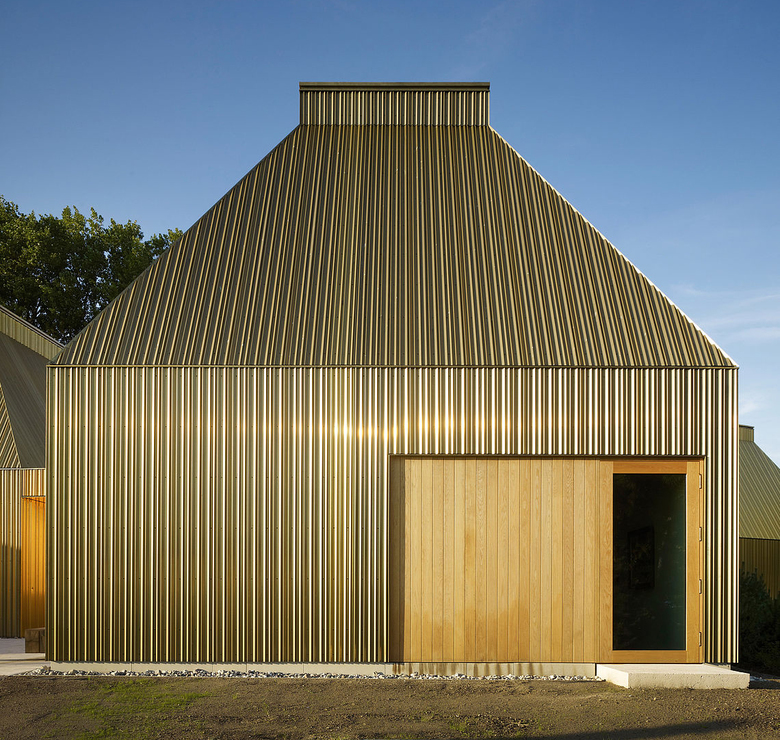TECU® Brass in Ahrenshoop
John Hill
11. November 2013
Photo: Christian Richters/KME
The Kunstmuseum Ahrenshoop builds upon the town's past and present through a 500-strong collection of paintings and sculptures by local artists housed in five interconnected one-room galleries designed by Staab Architekten. The TECU® Brass cladding from KME gives the museum a strong image while rooting it in its place via a contemporary expression of traditional forms and materials.
Ahrenshoop is a small town situated between the Baltic Sea and the salm marsh coast of Germany. This picturesque natural setting has made it a historically celebrated artist's colony and a popular tourist spot. The Kunstmuseum Ahrenshoop builds upon this past and present through a 500-strong collection of paintings and sculptures by local artists housed in five interconnected one-room galleries designed by Staab Architekten. The TECU® Brasscladding from KME gives the museum a strong image while rooting it in its place via a contemporary expression of traditional forms and materials.
Photo: Stefan Müller
Taking a step back from the building allows us to see how the building's form and materials respond to the natural and constructed environment, what the architects call "a deep bond with the landscape and the historic building traditions of this region." The thatched-roof houses, often grouped together, were the main inspiration for Staab Architekten. The form, the continuous cladding of the walls and the hip roofs, and the way the five galleries huddle together (see plan at bottom), tap into this past. Additionally, the golden TECU® Brass covering appears to directly reference the agricultural landscape, although the material will patina over time to a green-brown finish that will merge the pavilions into the grass and trees.
Photo: Stefan Müller
The crinkled profile of the brass cladding is slightly irregular, an intentional design feature that strengthens the connection to the thatch buildings in the area and gives the exterior walls and roofs a clear rhythm. Inside, the galleries are all-white, with only small openings giving views onto the surrounding landscape. Here the focus is on the art that is illuminated by the skylights atop the roofs, a strong enough justification for the new building's historical form.




